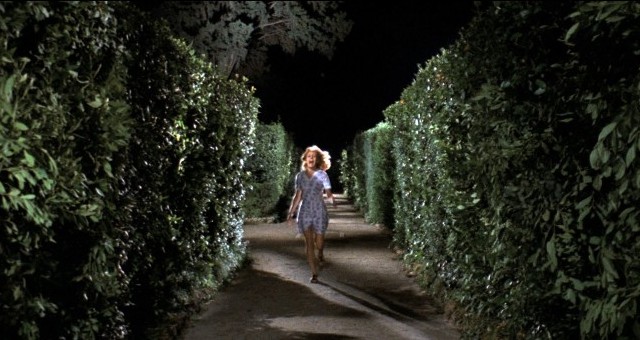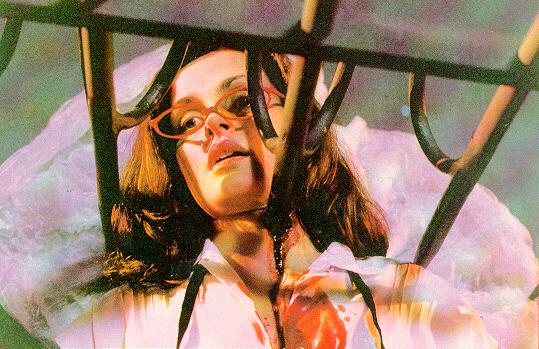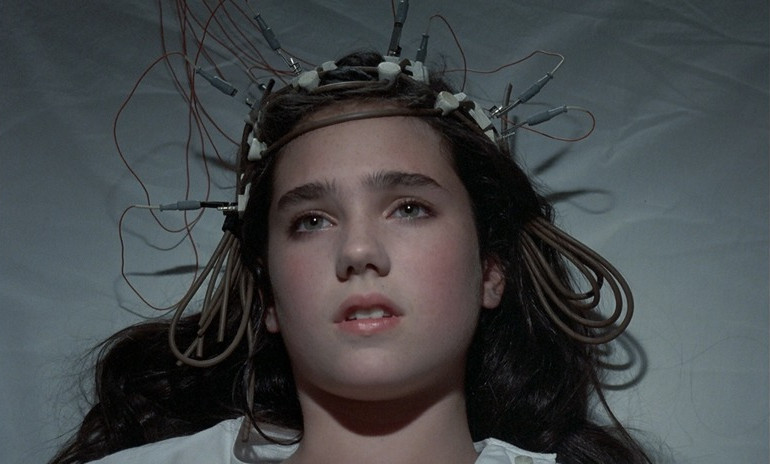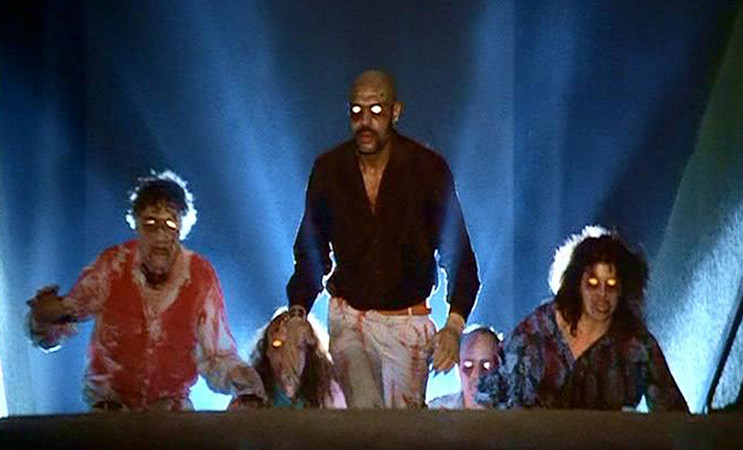There are many great directors within Horror’s rich history. Whenever you see shambling, brain-hungry zombie movies, we have George Romero to thank; for every nonsensical Italian movie with no discernable ending, we fondly remember Lucio Fulci; and for every low budget, zip-up monster, we tip our hats to Roger Corman. But when it comes to dream-like realities, black-gloved killers and violently gory deaths, there really is only one man to turn to. That man is Dario Argento.
Born in Rome in 1940, the 73-year-old director has had a prolific career spanning movies and television. For the more mainstream fans, he may be best remembered for his role as producer in the original Dawn of the Dead and his work with the music band Goblin. But to most he is one of the first directors to introduce the ‘Giallo’ movie genre to audiences. Originally a form of crime fiction, the Giallo genre derives its name from the yellow covers of the 1930’s pulp novels that inspired the cinema movement.
Argento’s last few efforts have been a pale shadow of his earlier work, lacking the magic that makes his movies so great. Whether this is to do with age, with changing cinematic vision, with the genre’s move towards greater realism, or the Meta-like tendency of constantly using and abusing his daughter on screen, we will never know for sure.
In truth it hardly matters, as Argento has produced a wealth of material that all fans should be grateful for. With so much work out there it can be intimidating for someone new to the world of Argento to know where to begin. So to provide a starting point we have compiled a top ten Argento film list, to help guide you to some of his better works, and allow you to discover others in your own time.
10. Four Flies on Grey Velvet (4 mosche di velluto grigio) – 1971
The Plot
Roberto Tobias is a troubled man. A drummer in a rock band, he has noticed that over the last few days someone has been stalking him. He decides to confront the man in an abandoned theatre. The stalker denies Roberto’s claims and becomes flustered, drawing a switch blade on him. A struggle ensues and in the commotion Roberto accidently stabs the man – while in the theatre an unknown masked person takes photographs. After fleeing the scene, Roberto finds the dead man’s ID in his mail the next day. Is the masked stranger responsible, and if so, what is their agenda?
What’s so great about it?
Though not his strongest film and quite slow in places, Four Flies on Grey Velvet has enough going on to keep most Argento fans happy. While Argento normally focuses his violence and sexual frustrations on women, Four Flies is different because it seems that it is the men who are being made sexual objects. There are numerous scenes of Roberto topless, and a flirtatious gay man is quickly dispatched. The revelation of the killer’s identity also reinforces the sense of male subjugation.
There are some interesting murders within the film, including a man who is bludgeoned to death. The screen filling up with blood as his face is slowly smashed in and his spitting of blood onto the screen at the moment of death make this particularly memorable scene. The finale where the killer dies in a car crash is superbly shot and could be classed as a classic Argento.
In beautiful slow motion we see the windscreen shatter while the killer looks helplessly on. Argento’s keen eye for screen aesthetics comes to the fore with an incredibly tense chase through a hedge maze and the effective use of slight tracking shots and static camera angles.
In most of Argento’s movies the protagonist is a character whom we can, in some way, relate to. Sometimes they are everyday people caught up in strange circumstances, or people who look completely lost in their surroundings (whether because the actors could not understand the script, or because it adds to Argento’s confusingly fun storylines). Roberto is something of a rock star who, to be honest, is quite a reprehensible character.
He treats his wife poorly and is homophobic, which is interesting because his interactions with straight men seem to have a somewhat homoerotic undertone. The only reason Roberto does not go to the police about his accidental murder is because he is worried he will be held responsible. Sometimes it‘s quite nice to dislike the lead, but it’s not a tradition that Argento continued with.
9. The Church (La chiesa) – 1989 (Co-Produced and Co-Written by Argento)
The Plot
In a Medieval village in Germany a group of knights slaughter an entire village because they believe them to be in league with the Devil. To stop the evil, the knights build a church over the site. Move to present day 1989, and the new Church Librarian manages to unleash the demons previously sealed in by the knights. This locks down the church, sealing all the people in, and also subjecting them to the mental and physical horrors the demons can inflict. It is left to Father Gus to try and destroy the demons.
What’s so great about it?
The Church was originally planned as a sequel to the Demons series and shares similar plot elements to that movie, but stands alone as a film you can watch without seeing the series. Argento’s attention to set details really comes into play within the confines of the gorgeous gothic cathedral the people are trapped in. It literally becomes the Devil’s playground.
The plot does not go any further than mentioned above, but the visuals are constantly changing, and as we see in a lot of his work, Argento likes to shake up our perception of reality. Characters degenerating into a corrupt state is a common thread in this movie, as people suddenly start to change physically and mentally. The Devil is both a physical creature taking his pleasures among the easily possessed people, as well as a psychological one that causes people’s own neuroses to attack them.
8. Phenomena (Creeper) – 1985
The Plot
After the brutal murder of a Swiss tourist in the countryside, we move 8 months into the future and are introduced to Jennifer Corvino, a new student at the Swiss Academy for girls. While sleepwalking one night, Jennifer witnesses a murder.
With the help of wheelchair-bound forensic entomologist John McGregor and his chimpanzee Inga (who found Jennifer after her sleepwalking episode), they try to piece together what is happening. John believes Jennifer has a telepathic connection to insects. While all this is going on, the murders continue and when a bout of taunting by the other girls causes Jennifer to unleash her telepathic powers, she becomes the number one suspect.
What’s so great about it?
From an incredible intro which takes an innocent event and turns it on its head, we go into a story that uses our natural revulsion of insects to provide an interesting twist by making them, in a sense, the heroes of the piece.
The use of actress Jennifer Connelly adds an innocence to the film and helps make the insects in the movie more relatable. Jennifer controls these bugs, but they also lead her to clues which point in the direction of the killer. The chimpanzee is also used to great effect, with an emotional scene where Inga is grieving over the death of a loved one. It is this skill of making inhuman things seem just as emotional as human beings which is the film’s strong point.
The ending to the movie, like most of Argento’s work, is the real treat. It is also one of the more disturbing endings of an Argento movie. A maggot-infested pit, a beaten, chained man and a horrific reveal are all delights in store at the film’s climax. The film’s ending, however, never feels as satisfying as his earlier entries, with the finale feeling more like an attempt to disgust at a visceral level as opposed to Argento’s more traditional shock-and-reveal.
7. Demons (Demoni) – 1985 (Produced and Co-Written by Argento)
The Plot
A random assortment of people are invited to watch a macabre horror movie at a theatre in West Berlin. In the lobby, guests witness a woman scratching herself on a prop mask from the film. While watching the movie about demonic possession (which takes a very physical approach), parallels between the lobby incident and the movie start to become apparent.
When the said scratch turns into a full demonic incident, the cinemagoers find themselves trapped inside a building with a creature that can infect other people with its evil. A simple trip to the cinema then becomes a fight for survival.
What’s so great about it?
Produced and co-written by Argento, but directed by Lamberto Bava, Demons is perhaps a surprising entry to this list, due to its tone being more in line with your classic splatter monster movie than the mystery movies Argento is famous for. But elements of his work can still be seen.
The notion of reality and fiction becoming intertwined, and the audience’s lack of certainty about exactly what’s going on are key features of Demons. The scene where the film’s characters come across the mask which was seen in the lobby, whilst behind the cinema curtain an infected woman starts to transform at the same time as the movie characters, is a fun parallel.
Demons also uses Argento’s love of subjecting characters to sudden unexpected events to great effect. We have helicopters falling through the ceiling, monsters appearing out of people’s bodies and even a fight scene involving a motorbike being ridden down the cinema aisles – a handy way to dispatch demons!
Though fairly light-hearted and fun, the killings are still pretty gruesome, but because of their fantastical nature they are not as believable as Argento’s other work. This entry in Argento’s catalogue is more of a popcorn movie than his other works. It plays out like a very warped zombie movie, and it is this that generates the fun.
6. The Bird with the Crystal Plumage (L’uccello dalle piume di cristallo) – 1970
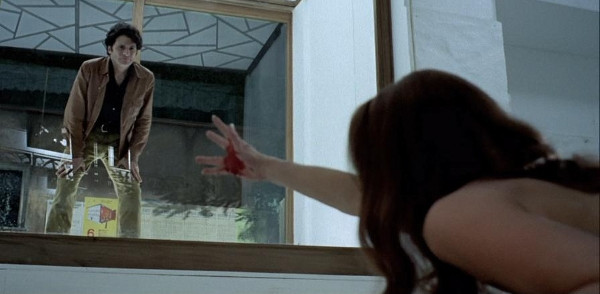
The Plot
American writer Sam Dalmas is suffering from writer’s block while living in Rome with his girlfriend. While trying to overcome this, he witnesses an attack on a woman in an art gallery. The black-garbed culprit escapes. All this plays on Sam’s mind and he decides to help with the investigation. The deeper he gets into his investigation, the stranger the attack seems. Sam thinks he is a missing a vital clue from that night. But with threats against his girlfriend potentially putting Sam and his friends in danger, can he survive long enough to find out?
What’s so great about it?
Argento’s first movie, and the one that put him on the map. You can see his story-telling technique emerging in this film, even if it is not as well developed as in his later films. It has an opening that keeps you fascinated until the end of the movie. The framework of the art gallery windows trapping Sam but also letting him see everything means the audience is just as helpless as he when they view the attack.
In Argento’s work colour plays an important role, but here it is the absence of colour which becomes a focal point. Key scenes happen in the dark with characters desperately trying to escape while the killer uses all this to their advantage. Even though the killings are restrained and the plot is a relatively linear, the ending is pure Argento with an incredible twist which certainly shocks, but also seems like an incredibly hard pill to swallow if you think about it too much.
